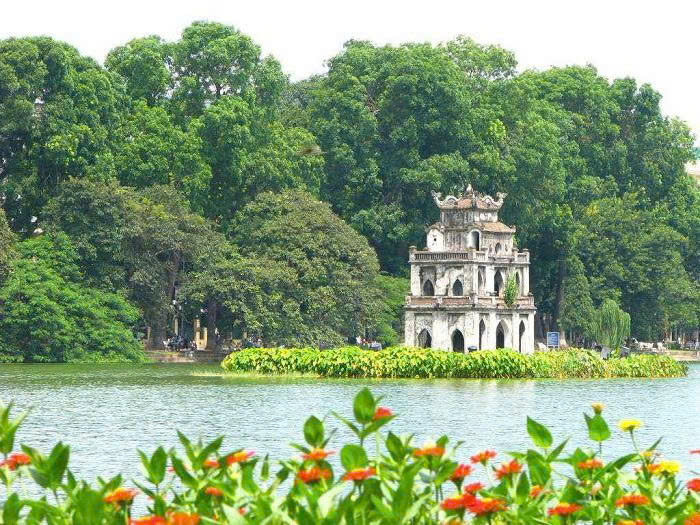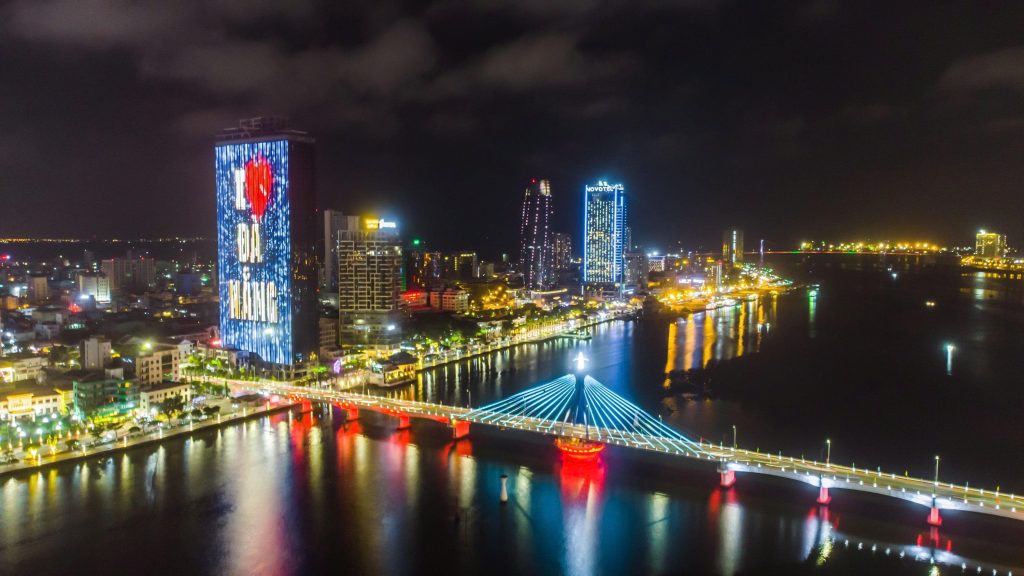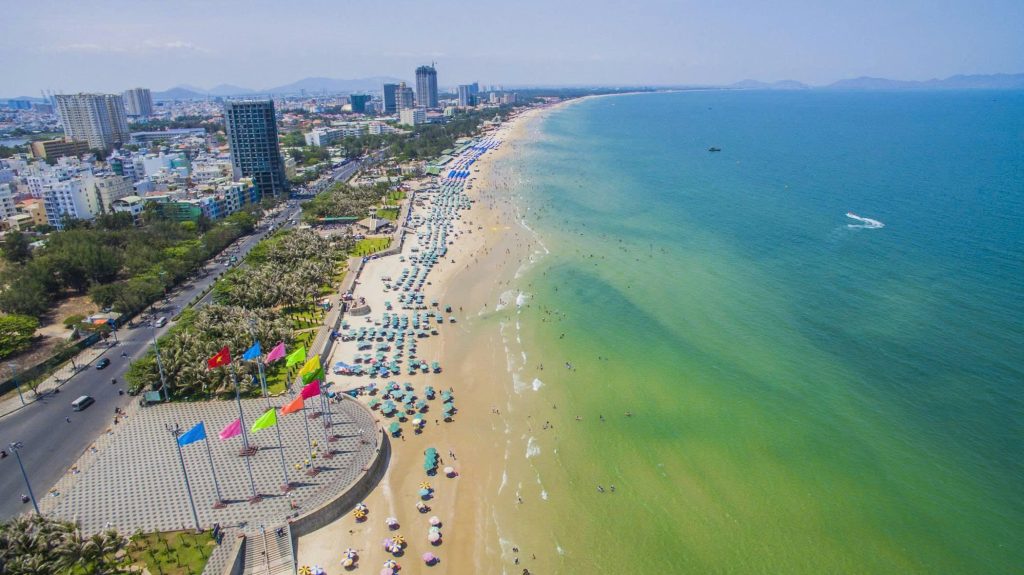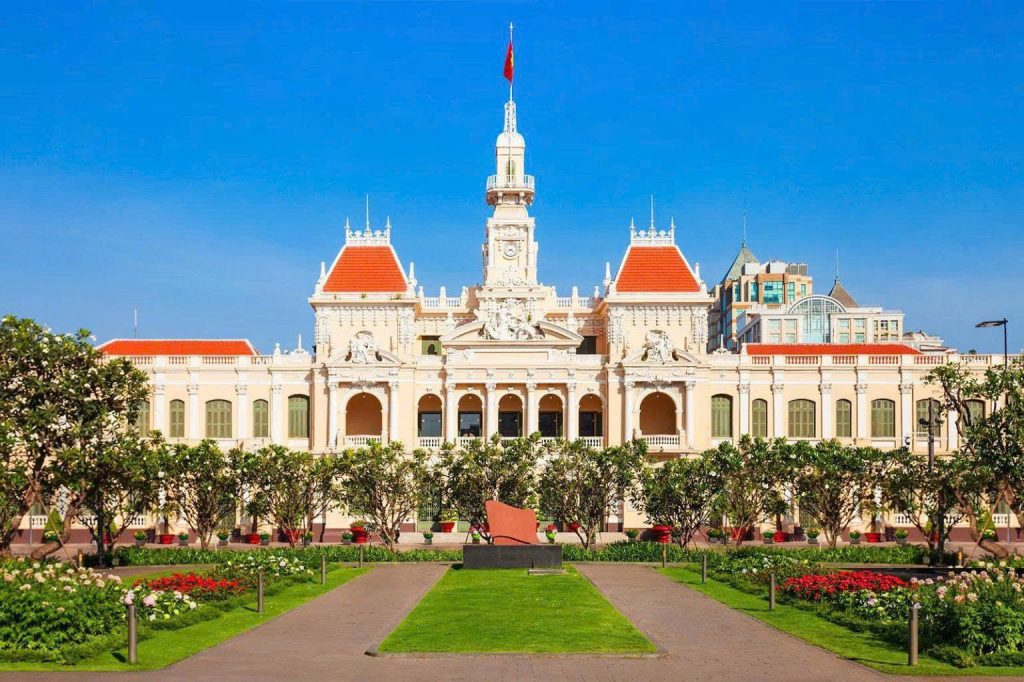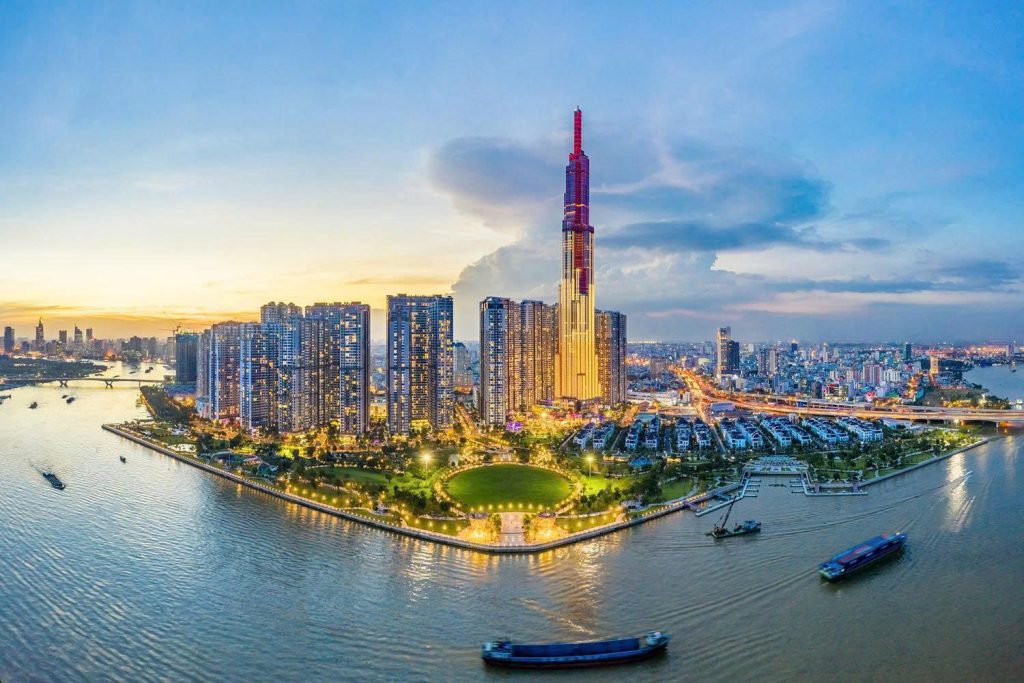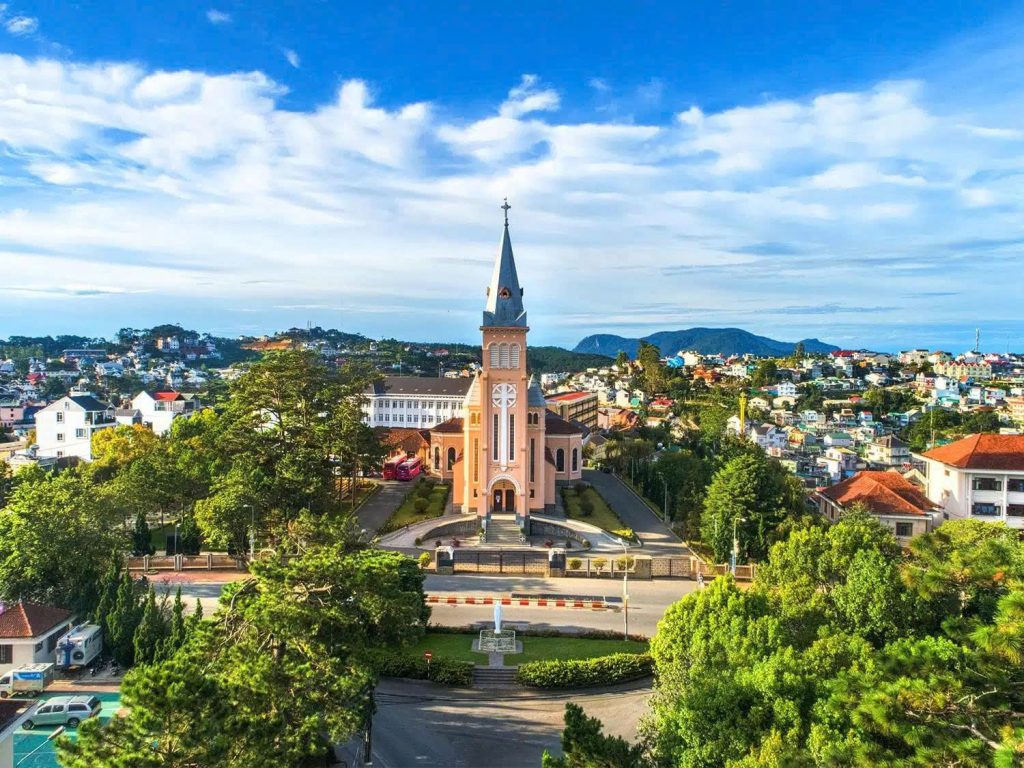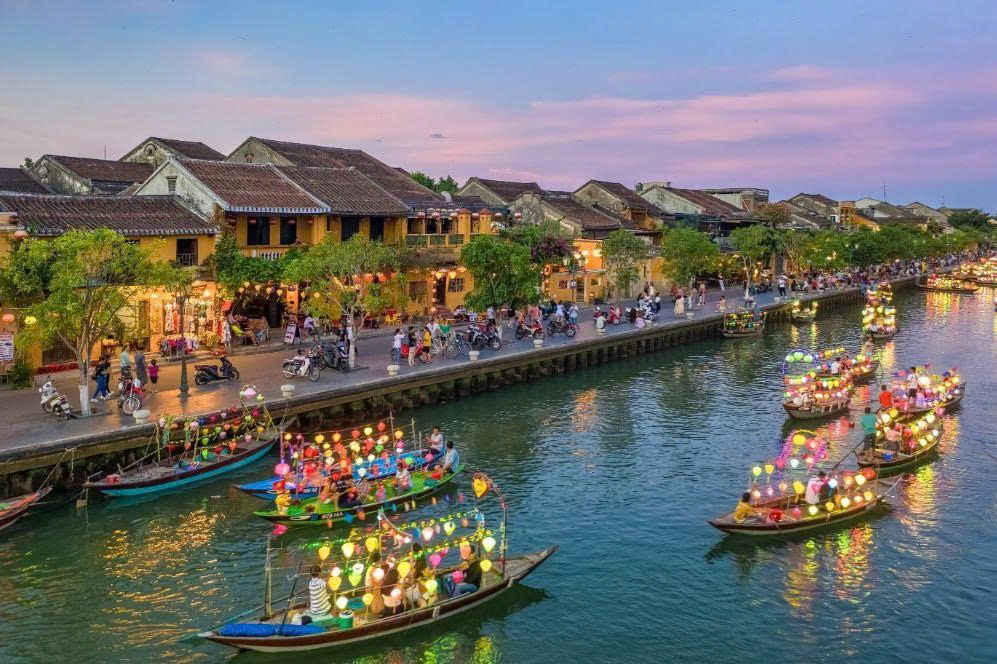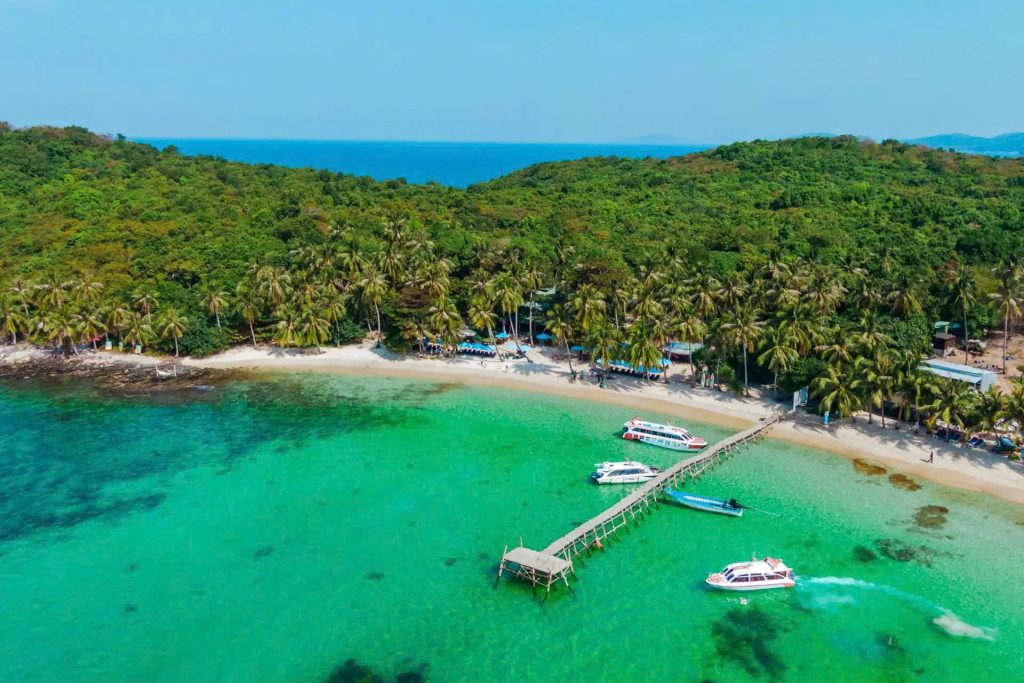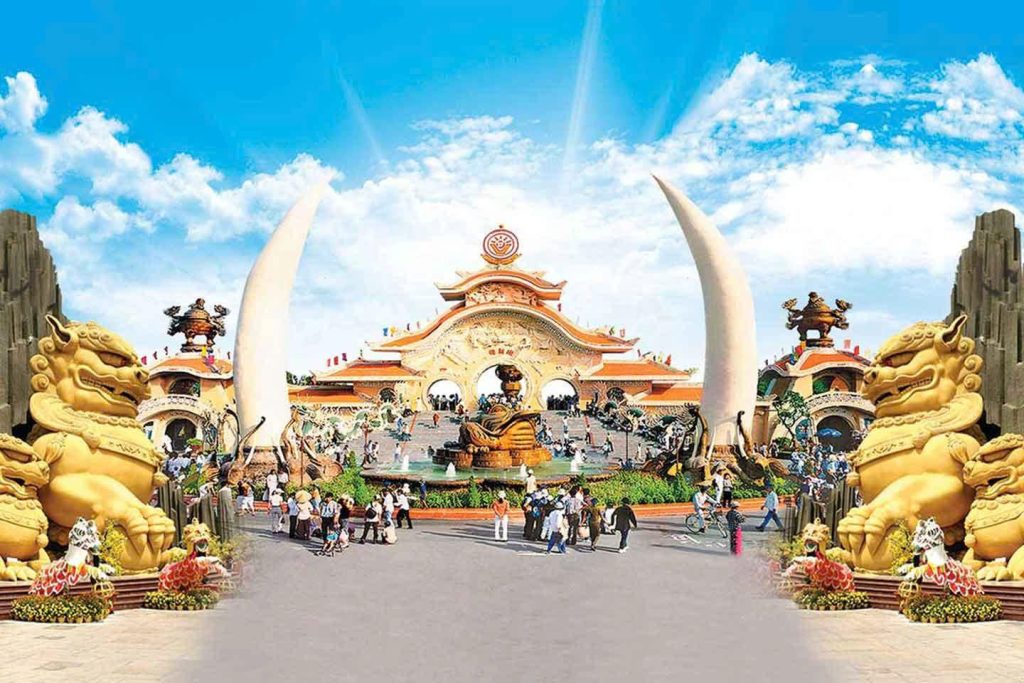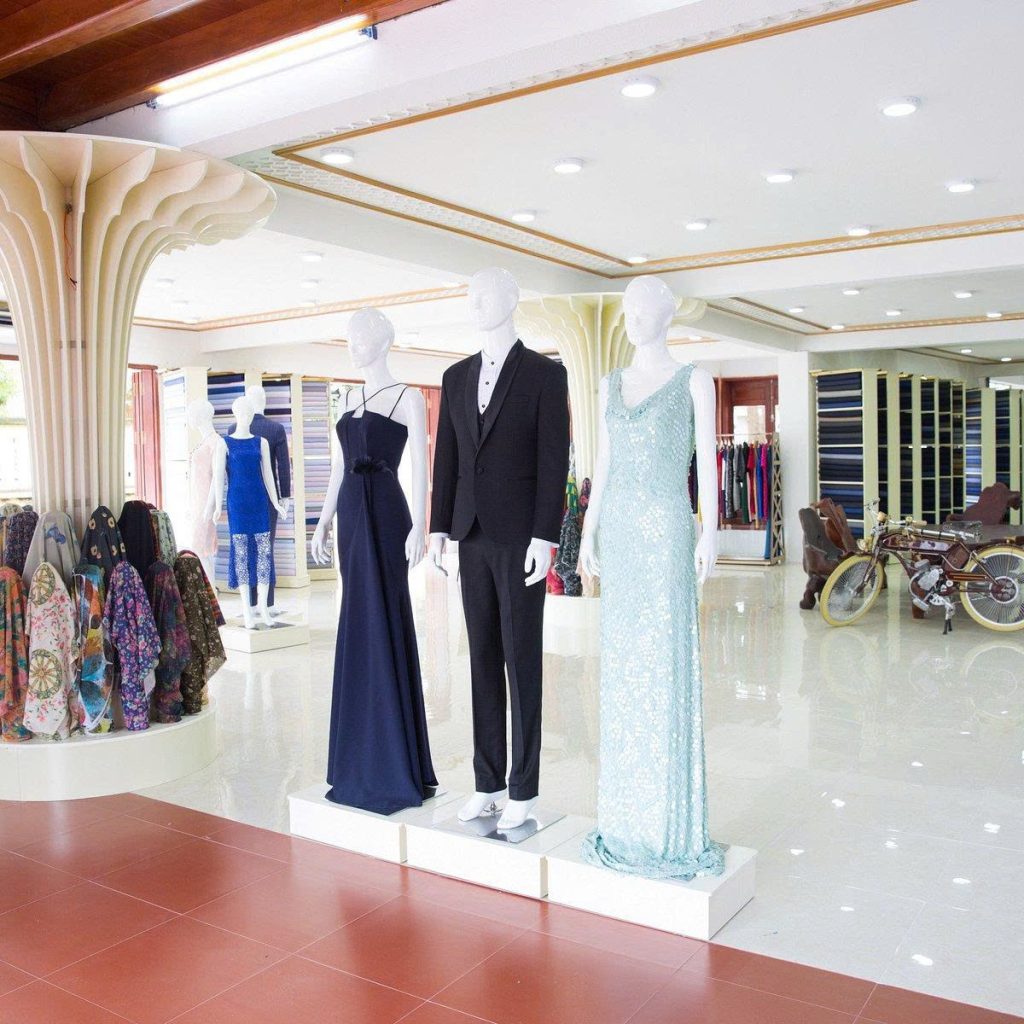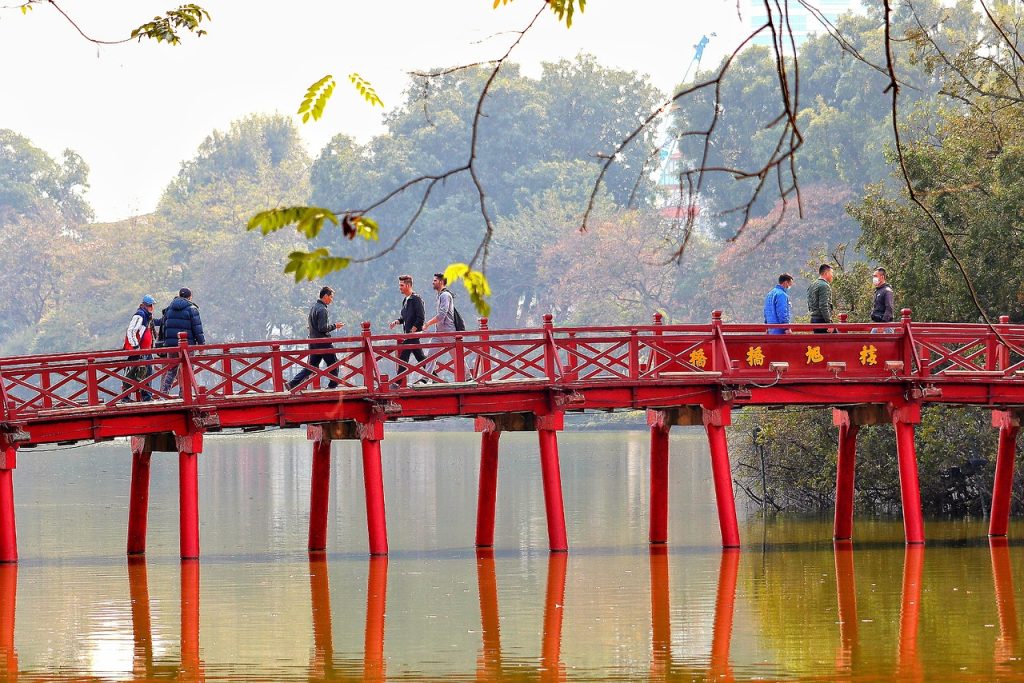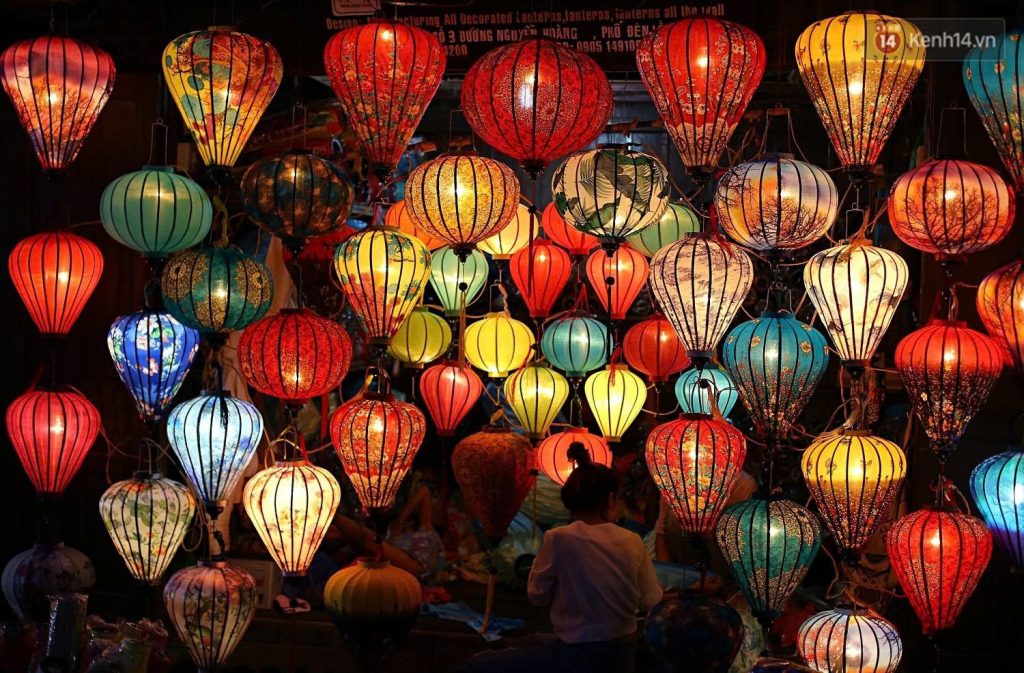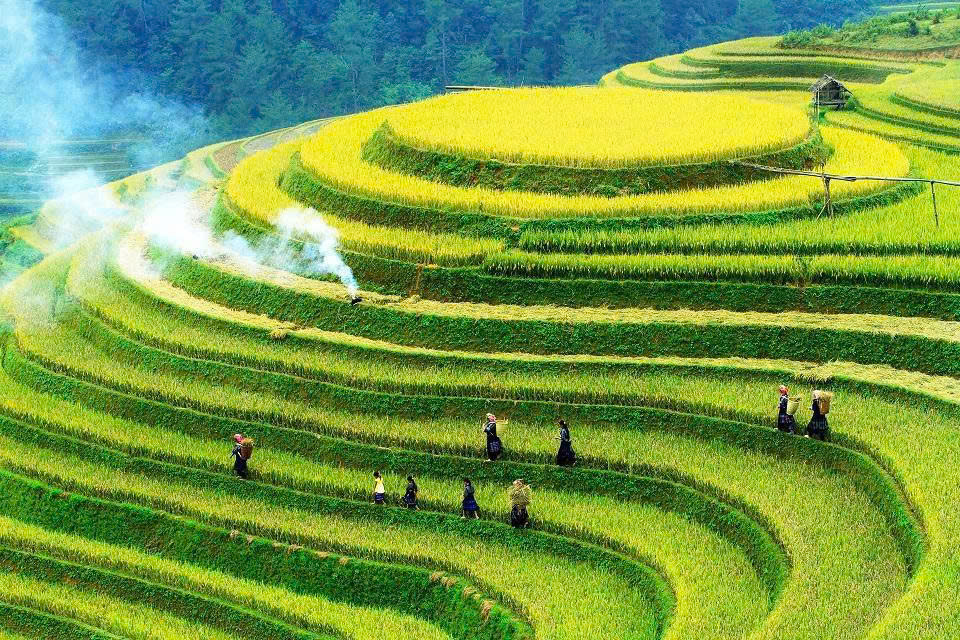Welcome to the definitive Hanoi travel guide for planning your journey to Vietnam’s captivating capital.
Hanoi is a city where age-old customs gracefully blend with contemporary energy, guaranteeing a memorable and profound adventure. This comprehensive guide, crafted with the latest insights and local expertise, is your indispensable tool to help you navigate the bustling streets, savor exquisite cuisine, và immerse yourself in the rich, thousand-year history of this vibrant metropolis.
More than just a destination, Hanoi is an experience. While the city continues to enhance its tourism infrastructure, it proudly retains its timeless charm and soul. From the inviting scent of phở wafting through narrow, atmospheric alleyways to the serene beauty of its central lakes, Hanoi offers a unique, compelling blend of deep cultural immersion and urban excitement. Its affordability, diverse attractions, and genuinely welcoming atmosphere make it an ideal choice for every type of traveler: solo explorers, romantic couples, families, and seasoned backpackers alike.
The Best Time to Visit Hanoi: Season by Season Breakdown
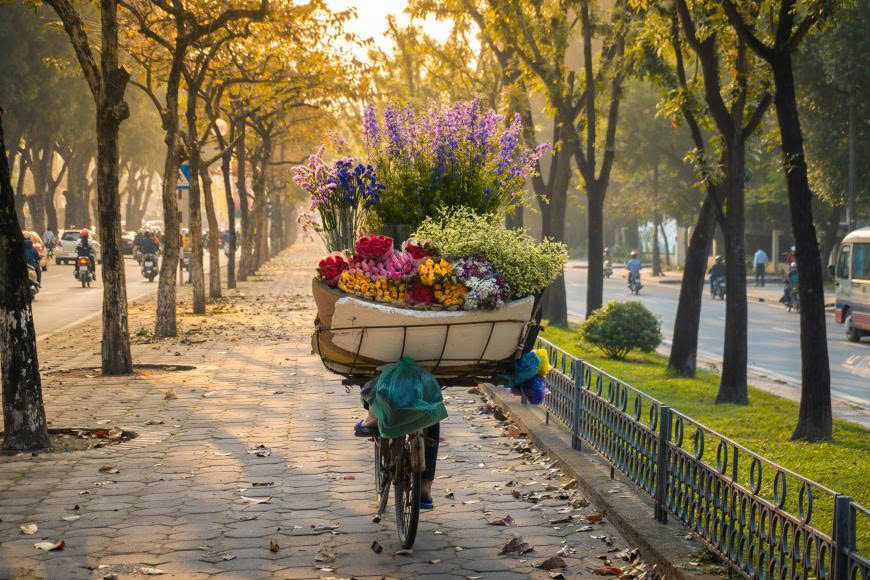
The ideal time to visit Hanoi is during spring (March to April) or autumn (September to November). These seasons offer pleasant temperatures, less humidity, and clear skies, perfect for exploring the capital’s ancient heart.
| Season | Duration | Weather Characteristics | Travel Recommendations |
| Spring (Ideal) | March – April | Mild, warm, light rain, and low humidity. Average temperatures range from 18◦C to 25◦C. | Perfect for outdoor activities, walking tours, and seeing flowers bloom around the lakes. |
| Autumn (Most Beautiful) | September – November | Cool, dry, and sunny days with significantly lower humidity. Average temperatures hover between 22◦C to 28◦C . | Arguably the most beautiful time. Ideal for street photography, café hopping, and long strolls around the Old Quarter. |
| Summer | May – August | Hot, very humid, with frequent, heavy rain showers (often late afternoon thunderstorms). Average temperatures are high, often reaching 35◦C , or more. | Plan indoor activities for the afternoons. Stay hydrated and take breaks often. You might find good deals on accommodation during this low-peak season. |
| Winter | December – February | Cool and dry, but can be quite chilly, especially during early mornings and evenings. Average temperatures drop to 14 ◦C to 20 ◦C . | Pack light jackets and sweaters. Great for savoring hot street food and the unique taste of egg coffee. |
How to Get to Hanoi
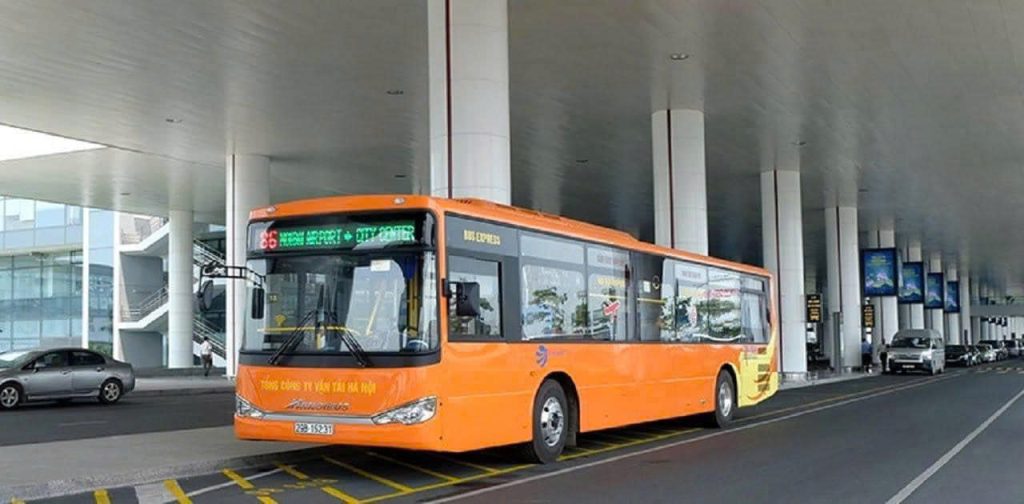
Most international travelers arrive at Noi Bai International Airport (HAN), located approximately 35 kilometers (22 miles) north of the city center.
| Transports | Estimated Cost | Travel Time | Tip |
| Taxi | 300,000 – 400,000 VND ($12-$16 USD) | 30 – 45 minutes | The quickest option. Only use reputable companies like Mai Linh or Vinasun. Confirm the flat fare or ensure the meter is running before starting. |
| Ride-hailing (Grab/Be/Xanh SM) | 250,000 – 350,000 VND ($10-$14 USD) | 30 – 45 minutes | Use the app to fix the price before you ride. This is often the most transparent and hassle-free choice, eliminating the need for negotiation. |
| Airport Bus (Public Bus #86) | 35,000 VND ($1.4 USD) | 60 – 90 minutes | An affordable and direct route to the Old Quarter. Look for the bright orange bus stop outside the arrival hall. Be sure to have small bills ready. |
| Private Transfer | Varies (check hotel/tour company) | 30 – 45 minutes | Pre-booked services offer comfort, especially for families or late-night arrivals. Your professional driver will meet you with a sign, providing peace of mind. |
Getting Around the City
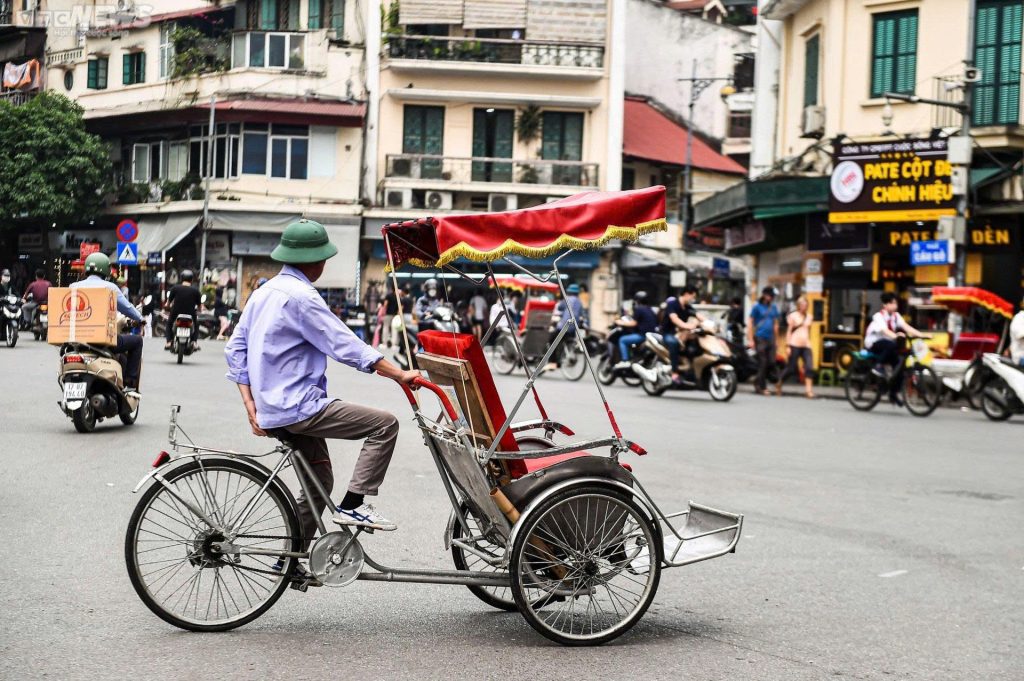
Hanoi’s appeal is found in its lively streets, and exploring them is an inherent part of the adventure.
- Walking: The absolute best way to explore the Old Quarter’s labyrinthine alleys and soak in the daily life. Wear comfortable shoes and be prepared for sensory overload.
- Grab, or Xanh (Motorbike or Car): Essential for longer distances. Motorbike Grab, or Xanh SM is incredibly popular, efficient, and cheap for single travelers. Always remember to wear the provided helmet.
- Taxi: Readily available. For shorter distances, they are convenient. Pro Tip: Always have your destination name or address written in Vietnamese to show the driver.
- Cyclo (Rickshaw): A traditional, leisurely way to experience the Old Quarter at a relaxed pace. Confirm the price and duration beforehand to avoid misunderstandings.
- Public Bus: An extensive network and very cheap, but can be confusing for first-time visitors. Best used for reaching destinations further from the city center, such as the Museum of Ethnology.
RELATED: How to Get from Hanoi Airport to City Center
2. Top Experiences & Must-See Attractions in Hanoi
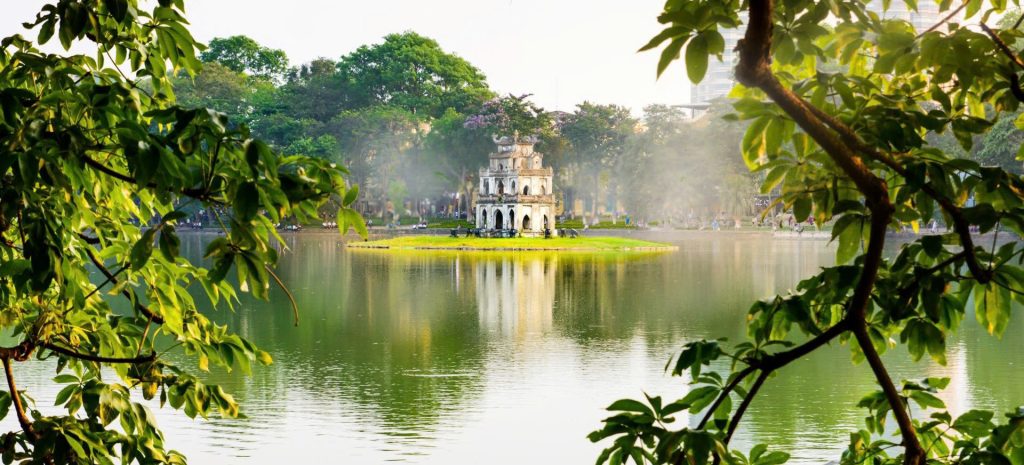
Hanoi’s rich history and vibrant culture offer an abundance of sights and activities, blending the solemnity of history with the dynamism of modern life.
Immerse Yourself in History & Culture
Hanoi Old Quarter:
- The Vibe: The historical heart of the city, famous for its “36 Guild Streets,” where each street was historically dedicated to a specific trade (e.g., Silk Street, Silver Street).
- Activity: Wander through, soak in the atmosphere, and discover hidden temples, traditional shops, and bustling markets like Dong Xuan Market. Tip: Take a guided street food tour here to truly experience local flavors and the street layout.
Hoan Kiem Lake & Ngoc Son Temple:
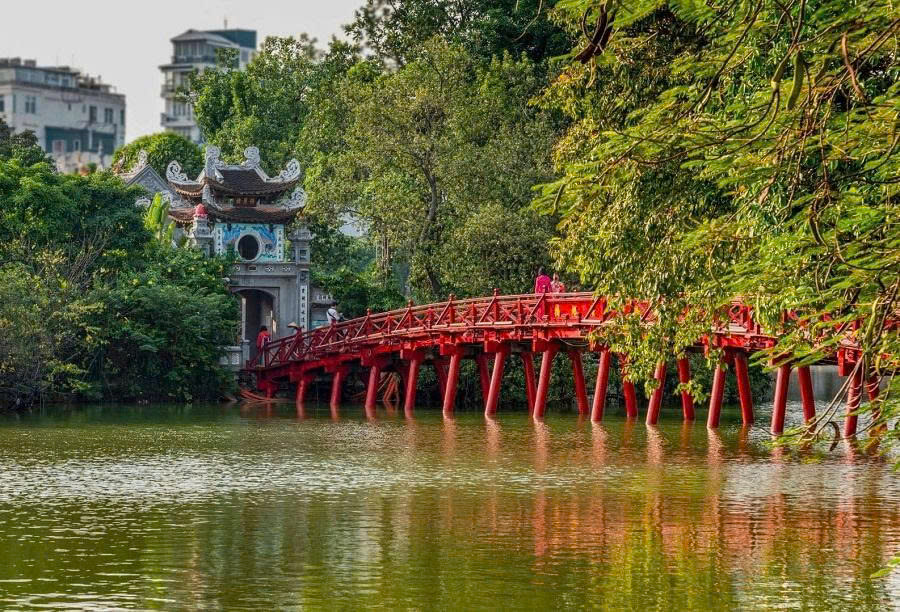
- The Vibe: This is Hanoi’s spiritual and physical heart. The lake is a focal point for locals practicing Tai Chi in the morning or walking in the evening.
- Attraction: Proceed over the well-known The Huc Bridge (Bridge of the Rising Sun) to Ngoc Son Temple. Legend says a giant turtle from the lake gave a magical sword to Emperor Lê Lợi to defeat the Ming invaders.
- Weekend Bonus: The streets surrounding the lake become a Walking Street every weekend (Friday evening to Sunday evening), offering street performers, games, and a vibrant social scene.
Temple of Literature (Văn Miếu – Quốc Tử Giám):
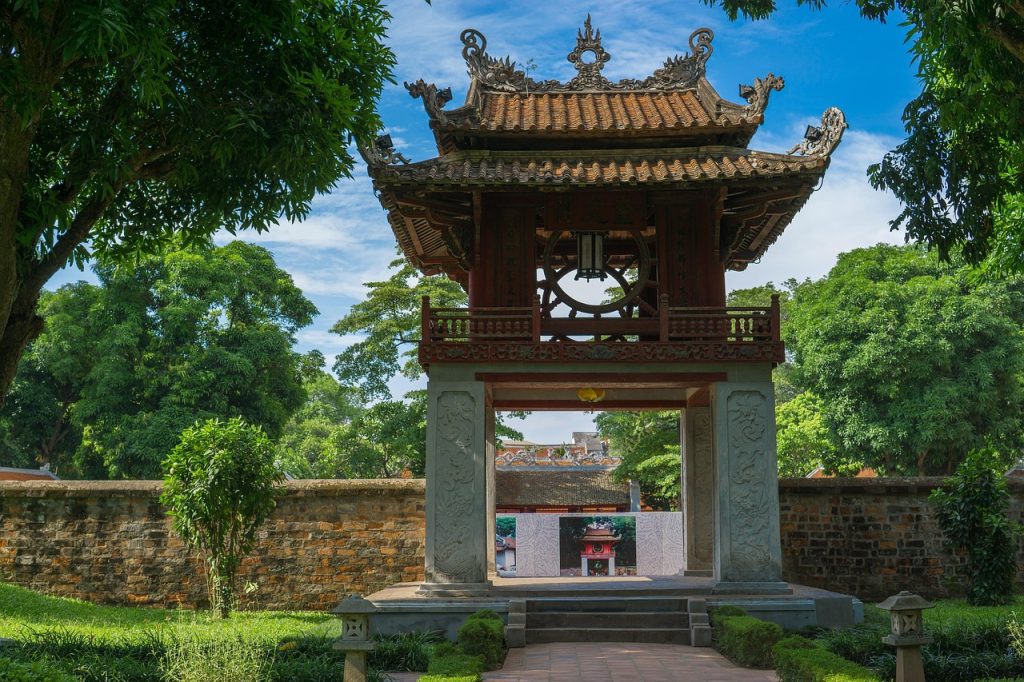
- The Vibe: Vietnam’s first national university, founded in 1070. A serene complex dedicated to Confucius and scholarly learning.
- Highlight: Admire the beautiful courtyards, ancient trees, and the stone stelae (turtles carrying stone tablets) inscribed with the names of successful scholars.
RELATED: Temple of Literature: A Journey into Vietnam’s First University
Ho Chi Minh Mausoleum Complex:
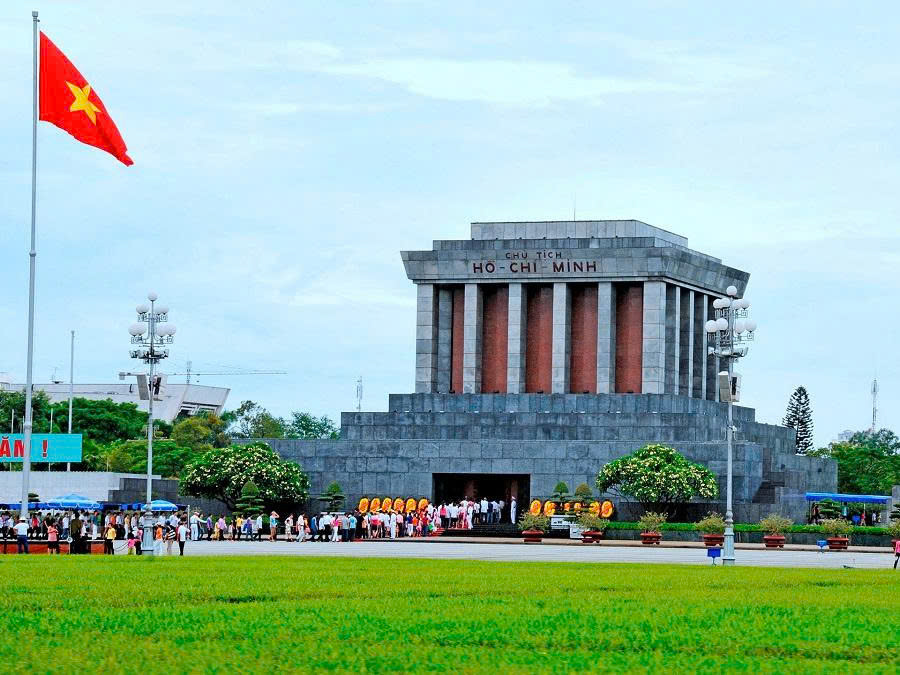
- The Vibe: The ultimate repose for the revered leader Ho Chi Minh. A solemn place requiring respectful attire and silence.
- Complex includes: The Mausoleum itself, Ho Chi Minh’s Stilt House (where he lived and worked simply), and the beautiful One Pillar Pagoda (a unique lotus-flower design). Check opening hours/closing periods before visiting, as the Mausoleum is occasionally closed for maintenance.
RELATED: The Profound Significance of Ho Chi Minh Mausoleum
Hoa Lo Prison (Hanoi Hilton):
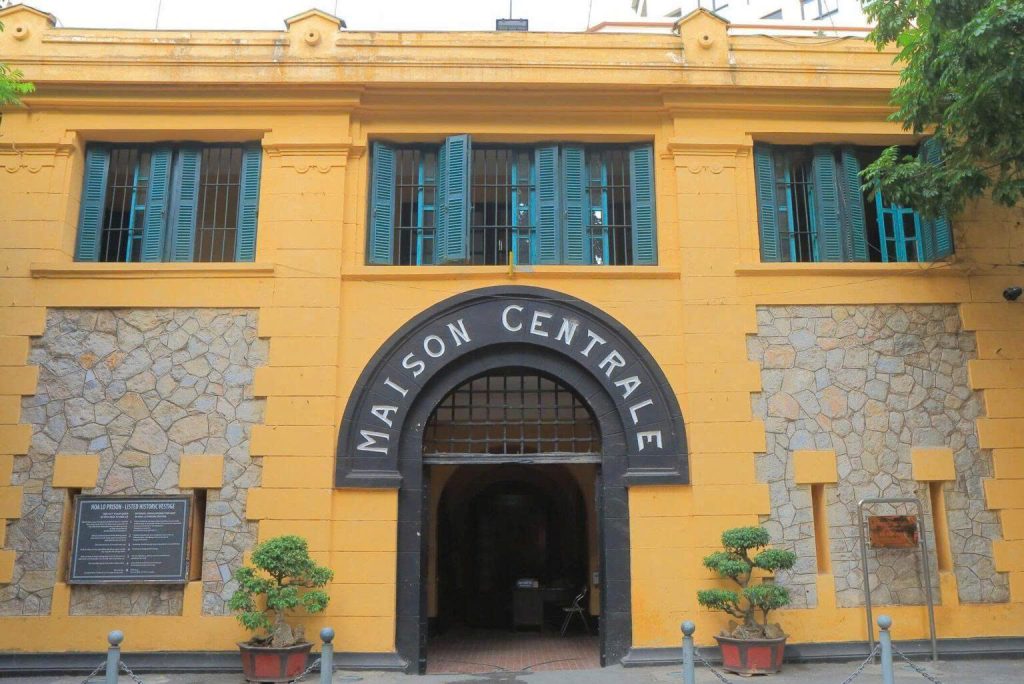
- The Vibe: A poignant historical site offering a glimpse into Vietnam’s colonial past and the imprisonment of Vietnamese political activists, as well as the later confinement of American POWs during the Vietnam War.
- Must-See: The Guillotine Room and the detailed exhibits on Vietnamese resistance.
RELATED: Hoa Lo Prison: From ‘Maison Centrale’ to ‘Hanoi Hilton’
Imperial Citadel of Thang Long
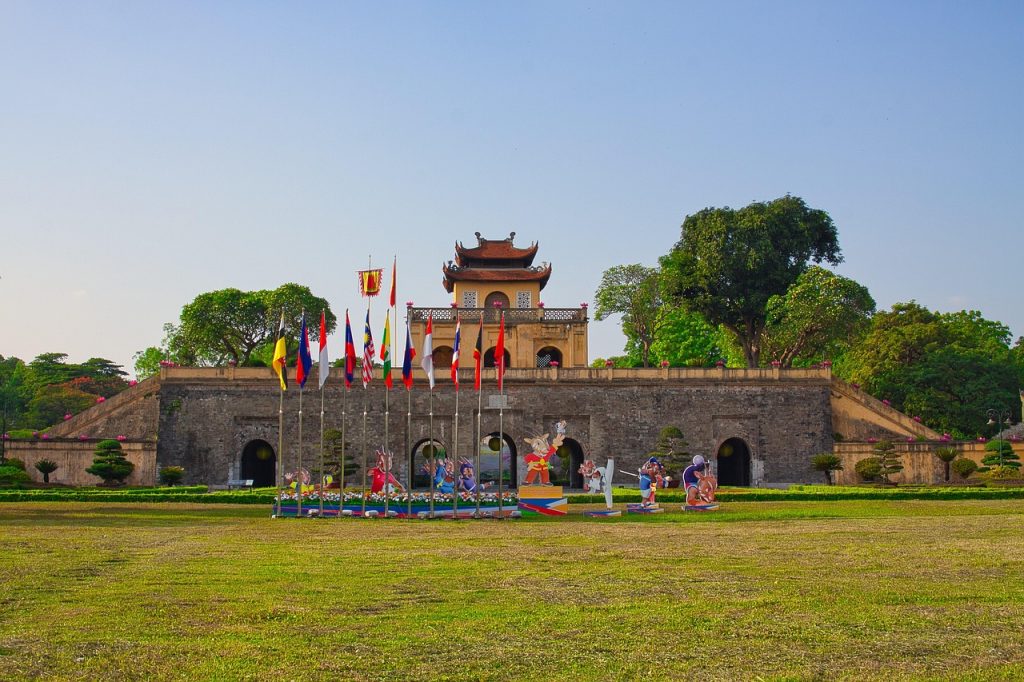
- The Vibe: A UNESCO World Heritage Site that served as Vietnam’s political center for thirteen consecutive centuries, beginning under the Ly Dynasty (11th century). It is a historically profound site that offers a peaceful escape from the city bustle.
- Must-See: Explore the archaeological excavation zone to view artifacts and foundations from past dynasties, and climb the Hanoi Flag Tower for a historical perspective and city views. It’s a key site for understanding the layered history of the city, which was once known as Thăng Long (Ascending Dragon).
RELATED: Thang Long Imperial Citadel Hanoi: 1000 Years of Vietnam History
Tran Quoc Pagoda
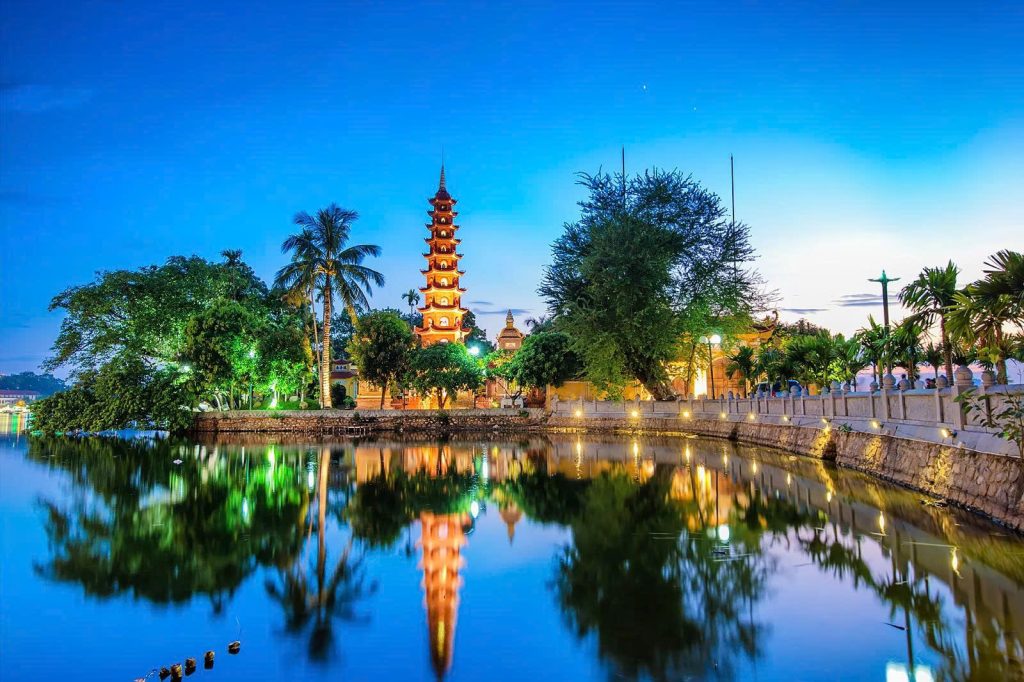
- The Vibe: Located on a small island near the southeastern shore of West Lake (Hồ Tây), this is the oldest pagoda in Hanoi, dating back to the 6th century. It offers a serene and exceptionally scenic retreat, highlighting the deep roots of Vietnamese Buddhism.
- Must-See: Admire the striking, multi-tiered red pagoda (Stupa), which contains relics of the Buddha. The grounds are filled with ancient trees, including a sacred Bodhi tree taken from the original tree in India under which the Buddha achieved enlightenment.
- Tip: Visit in the late afternoon to witness a beautiful sunset over West Lake, reflecting off the pagoda’s distinct architecture.
One Pillar Pagoda (Chùa Một Cột)
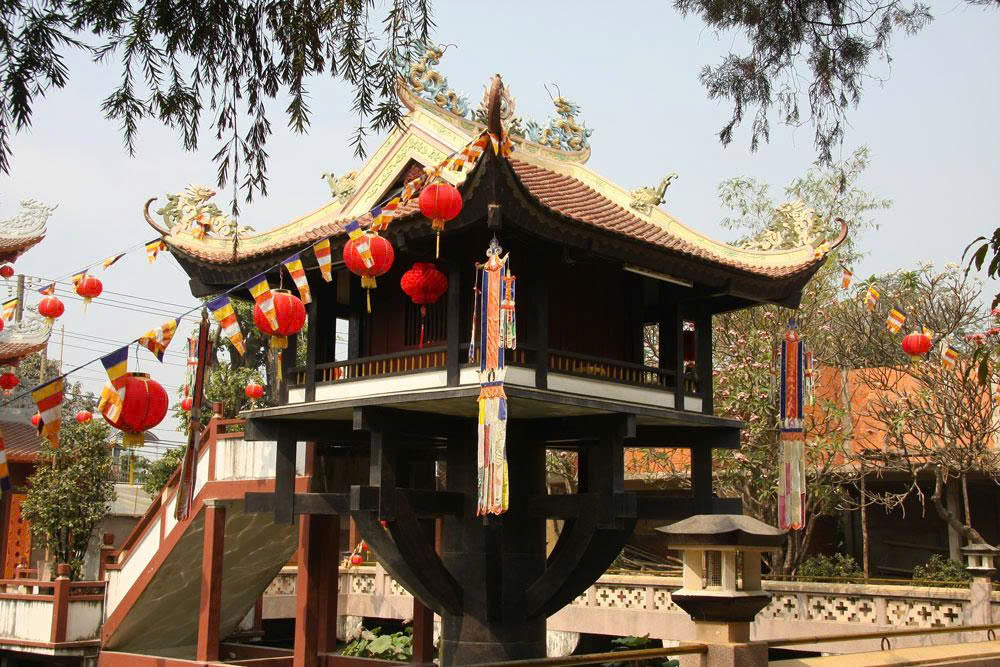
- The Vibe: An architectural masterpiece and one of Vietnam’s most iconic symbols. This unique Buddhist temple is built in the shape of a lotus blossom on a single stone pillar, representing purity rising from a sea of sorrow.
- Complex Includes: It is located within the Ho Chi Minh Mausoleum Complex area, making it easy to visit after seeing the Mausoleum and Stilt House. The pagoda is relatively small but is highly significant due to its distinctive structure.
- History: The original pagoda was built in the 11th century by Emperor Lý Thái Tông, following a dream in which the Bodhisattva Avalokiteshvara guided him on a lotus flower.
Vietnam Museum of Ethnology:
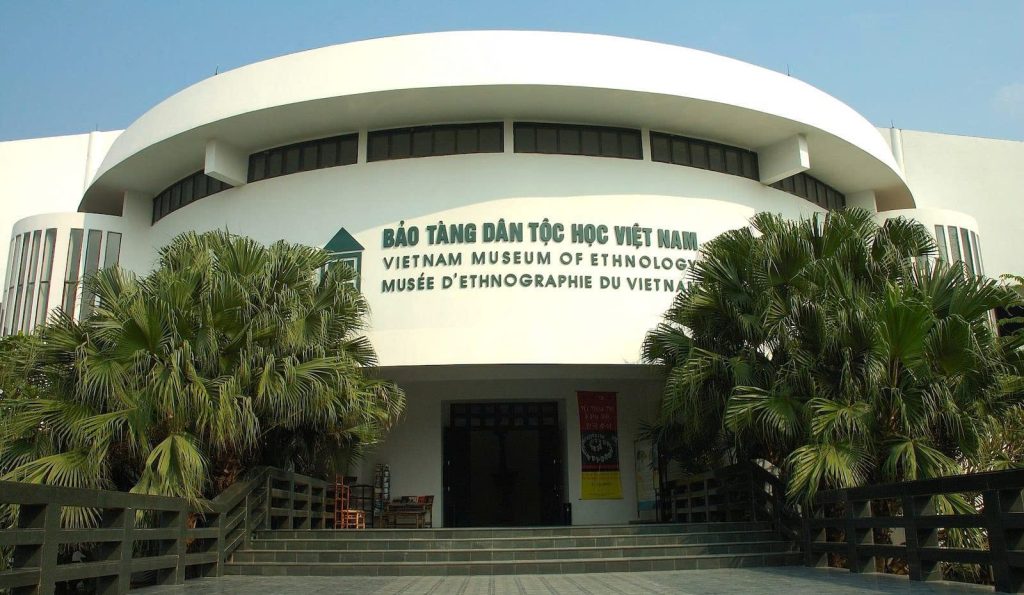
- The Vibe: Located slightly outside the center, this is a fantastic museum that highlights the different cultures of Vietnam’s 54 indigenous groups.
- Highlight: The outdoor exhibition area features life-sized replicas of traditional houses from various ethnic groups—highly recommended for cultural understanding.
St. Joseph’s Cathedral:
- The Vibe: A beautiful Gothic Revival church, a prominent landmark in the city center, reminiscent of the Notre Dame in Paris. A great place to grab a coffee at the surrounding cafes and people-watch.
Unique Hanoi Experiences
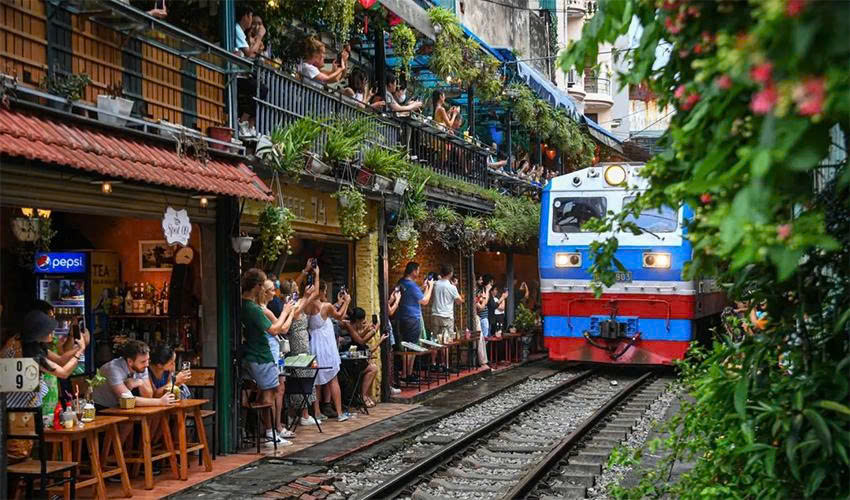
- Water Puppet Show (Thang Long Water Puppet Theatre): A traditional Vietnamese art form originating in the rice paddies, depicting daily life and legends, accompanied by live traditional music. It’s a truly unique, must-see performance.
- Explore the French Quarter: Admire the elegant colonial architecture, including the Hanoi Opera House and stately villas. This area offers wide, tree-lined boulevards, a stark contrast to the Old Quarter’s narrow alleys.
- Train Street: Witness the unique spectacle of a train passing inches from houses in a narrow residential street. Important: Access can be restricted due to safety regulations. Check local updates and always obey barriers and staff warnings.
- Attend a Local Cooking Class: Learn to master dishes like Phở or Nem Rán. This is a fun, hands-on way to take a piece of Vietnamese culture home with you.
3. What to Eat & Drink in Hanoi
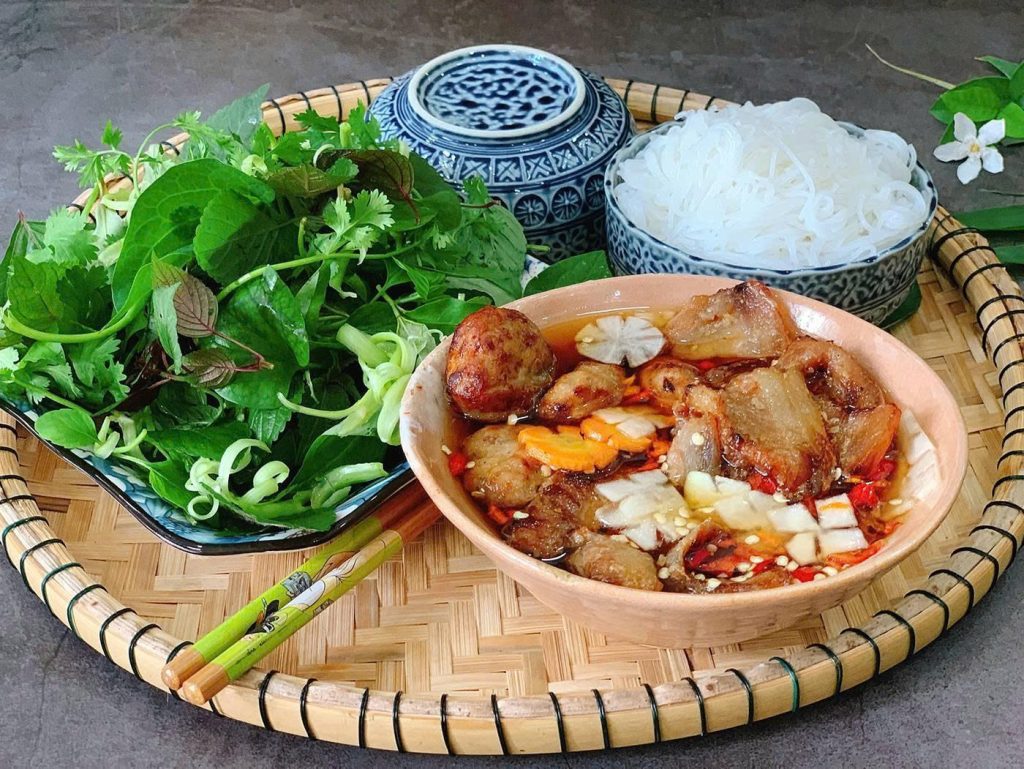
Hanoi is a paradise for food lovers. Trying street food forms a crucial element of the overall adventure. The city’s cuisine is known for its balance of five fundamental tastes (sour, sweet, salty, bitter, and spicy) and its reliance on fresh herbs.
Must-Try Hanoi Dishes
Phở: The iconic Vietnamese noodle soup.
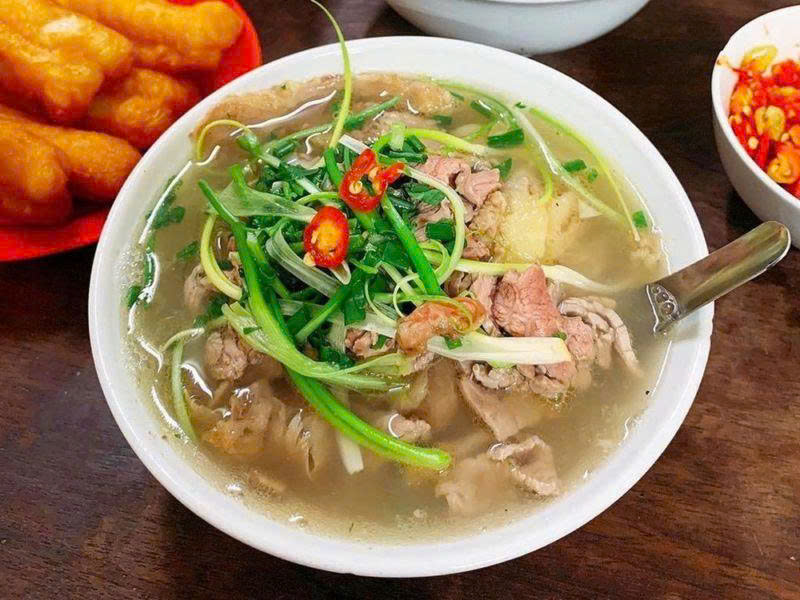
- Must-Try: Phở Bò (beef) or Phở Gà (chicken). For a Hanoi-specific twist, try Phở Sốt Vang (Beef Stew Pho) or Phở Chiên Phồng (Pillowy Fried Pho Noodles).
- Where to find: Look for small, unassuming street stalls that only serve Phở—they often have the best broth.
Bún Chả: Grilled pork patties and slices of pork belly, served with cold vermicelli noodles, fresh herbs, and a savory-sweet dipping sauce.
- The Story: Made internationally famous when President Obama dined here with Anthony Bourdain.
- Hanoi Specialty: This dish is considered the quintessential Hanoi lunch.
Nem Rán (Fried Spring Rolls) / Chả Giò: Crispy, savory spring rolls. A classic side dish or appetizer found everywhere.
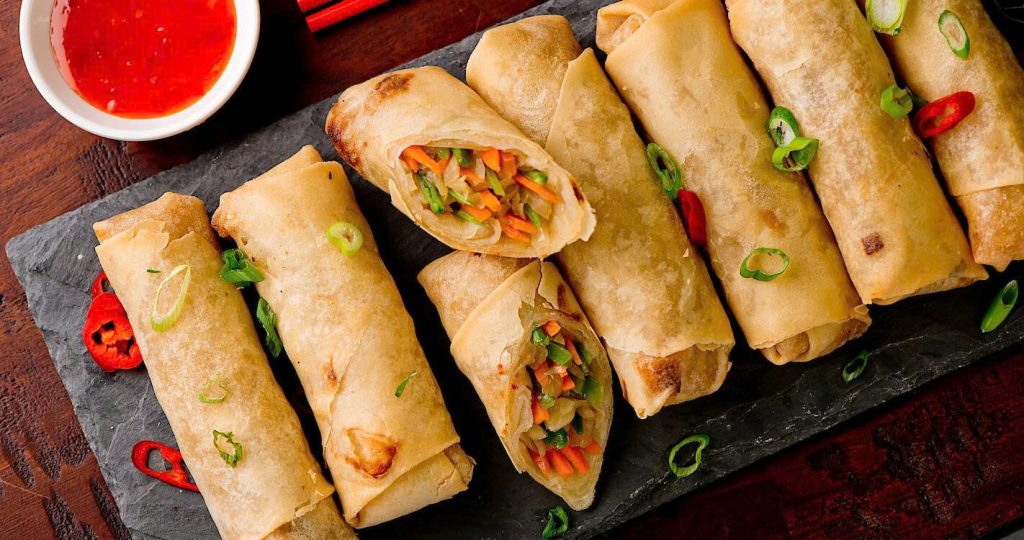
Bún Đậu Mắm Tôm: Vermicelli noodles with fried tofu, boiled pork, various fried goods (like chả cốm – green rice flake sausage), and a pungent fermented shrimp paste (mắm tôm).
- For the Adventurous: Mắm tôm has a strong smell but a deep, umami flavor. Squeeze the lime into the sauce, add chili, and stir for the full experience.
Bánh Mì: The famous Vietnamese baguette sandwich.
- Hanoi Style: Often less stuffed than its Southern counterpart, focusing on quality fillings like pâté, pork floss, and cucumbers.
Cà Phê Trứng (Egg Coffee): A unique Hanoi invention – rich Vietnamese coffee topped with a creamy, frothy egg yolk mixture (a bit like liquid tiramisu).

- Must-Try: Head to one of the original Giảng or Đinh cafes for the authentic, cozy experience.
Chả Cá Lã Vọng: Turmeric-marinated grilled fish with dill and spring onions.
- The Experience: It’s served at the table on a hot pan, where you mix it with vermicelli, peanuts, and shrimp paste. So famous, there is a street named after the dish.
RELATED: 10 Best Coffee Shops in Hanoi: A Local’s Guide
Where to Find the Best Food
- Street Food Stalls: Don’t be afraid to try local street vendors. Look for places with lots of locals—this is the true sign of quality and freshness.
- Night Markets: Dong Xuan Night Market and Hanoi Weekend Night Market (weekend evenings) are excellent for diverse street food, snacks, and cheap goods.
- Cafes by the Lake: Enjoying a traditional cà phê sữa đá (iced milk coffee) by Hoan Kiem Lake is the perfect way to spend an afternoon.
RELATED: Foodie’s Guide to the 15 Best Street Foods in Hanoi
4. Where to Stay in Hanoi
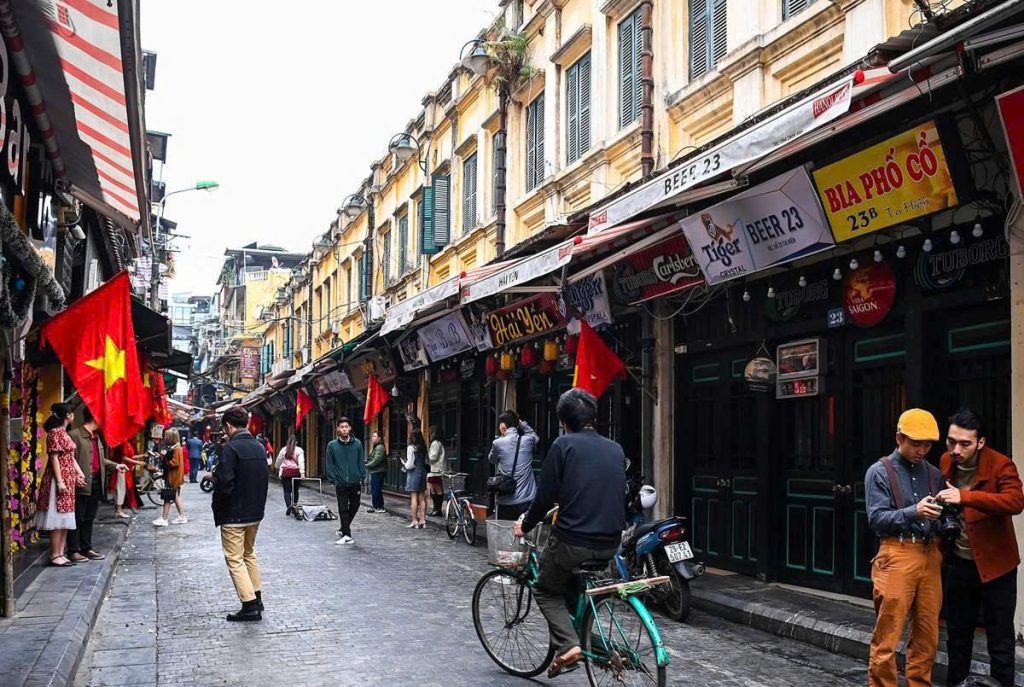
Hanoi offers accommodation for every budget and style, from basic hostels to five-star luxury resorts. Choosing your neighborhood is key to defining your trip’s atmosphere.
Popular Areas to Stay
| Area | Best for | Pros | Cons |
| Old Quarter | First-timers, budget travelers, backpackers. | In the heart of the action. Most attractions are walkable. Tons of food and nightlife. | Can be noisy and hectic, especially on weekends. |
| French Quarter | Luxury travelers, couples, those seeking quieter streets. | Ideal for luxury stays. Home to grand hotels, designer boutiques, and elegant architecture. | Further from the core street food and local markets of the Old Quarter. |
| Tay Ho (West Lake District) | Expats, long-term visitors, those seeking an escape. | More easygoing, unconventional feel. Cafes by the lake, modern apartments, great nightlife. | Further from the main tourist attractions (requires Grab/taxi). |
| Ba Dinh District | Business travelers, budget-conscious travelers. | Close to Ho Chi Minh Complex and government buildings. Quieter than the Old Quarter, with mid-range options. | Less central for food and nightlife compared to the Old Quarter. |
Accommodation Types
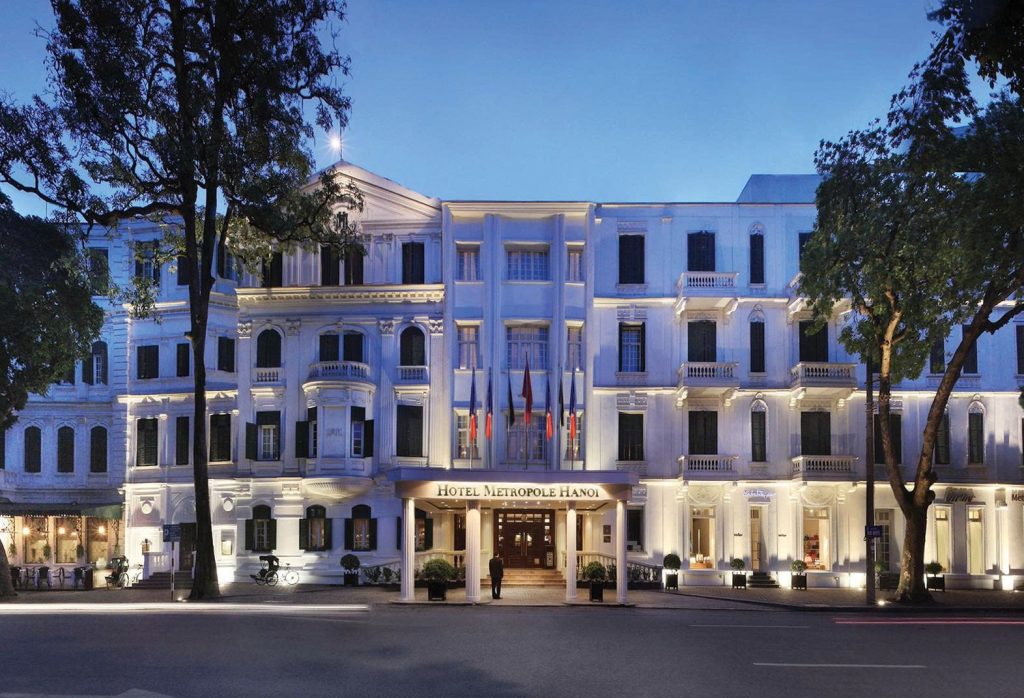
- Hostels: Abundant in the Old Quarter, offering a great social atmosphere for backpackers.
- Boutique Hotels: Numerous charming, character-filled hotels, particularly in the Old Quarter, often housed in beautifully preserved buildings.
- Luxury Hotels: Concentrated in the French Quarter (e.g., Sofitel Legend Metropole, Hotel de l’Opéra).
- Airbnbs/Serviced Apartments: Common in Tay Ho and Ba Dinh for longer stays or for families needing more space.
RELATED: Where to Stay in Hanoi: Your Ultimate Guide to the Best Places
5. Day Trips from Hanoi: Exploring Beyond the Capital
Hanoi Travel Guide isn’t complete without mentioning its role as an excellent base for exploring some of Northern Vietnam’s most iconic landscapes.
Ha Long Bay (Overnight Highly Recommended):

- This UNESCO World Heritage location is characterized by its thousands of limestone pillars and tiny islands jutting out of the emerald water.
- Getting Around: A day trip is possible (4-hour bus ride each way), but an overnight cruise is highly recommended to experience the sunset, sunrise, and quieter areas of the bay (like Lan Ha Bay or Bai Tu Long Bay).
- Activities: Kayaking, swimming, visiting floating villages, and caving.
Ninh Bình (Tam Cốc – Bích Động / Trang An):

- Often called “Ha Long Bay on land,” this area boasts stunning rice paddies, limestone karsts, and ancient pagodas.
- Must-Do: Embark on a classic sampan boat trip at Trang An Scenic Landscape Complex (a UNESCO site) or Tam Cốc – Bích Động, passing through captivating caves and beautiful rivers.
- Getting Around: Easily done as a day trip by bus or private car (about 2-2.5 hours each way).
Sapa (2-3 Day Trip):
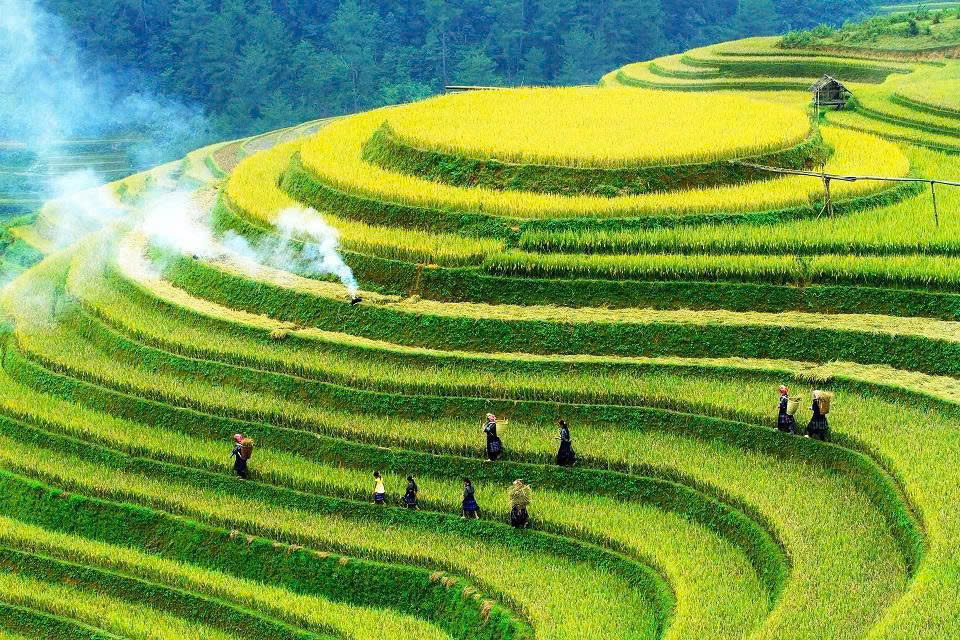
- A mountainous region famous for its spectacular terraced rice fields and vibrant ethnic minority villages (H’mong, Dao, Tay, etc.).
- Getting Around: Not a day trip. Accessible from Hanoi by overnight sleeper train or a 5-6 hour luxury bus ride.
- Activities: Trekking through breathtaking mountain scenery, staying in a homestay, and learning about local cultures.
RELATED: Discover Hanoi 3 days 2 nights: Detailed Itinerary
6. Hanoi Travel Tips: Safety, Etiquette & Money Matters
To guarantee your trip goes smoothly, consider these recommendations for a deeper and safer experience in Vietnam’s Ancient Heart.
Financial and Practical Tips
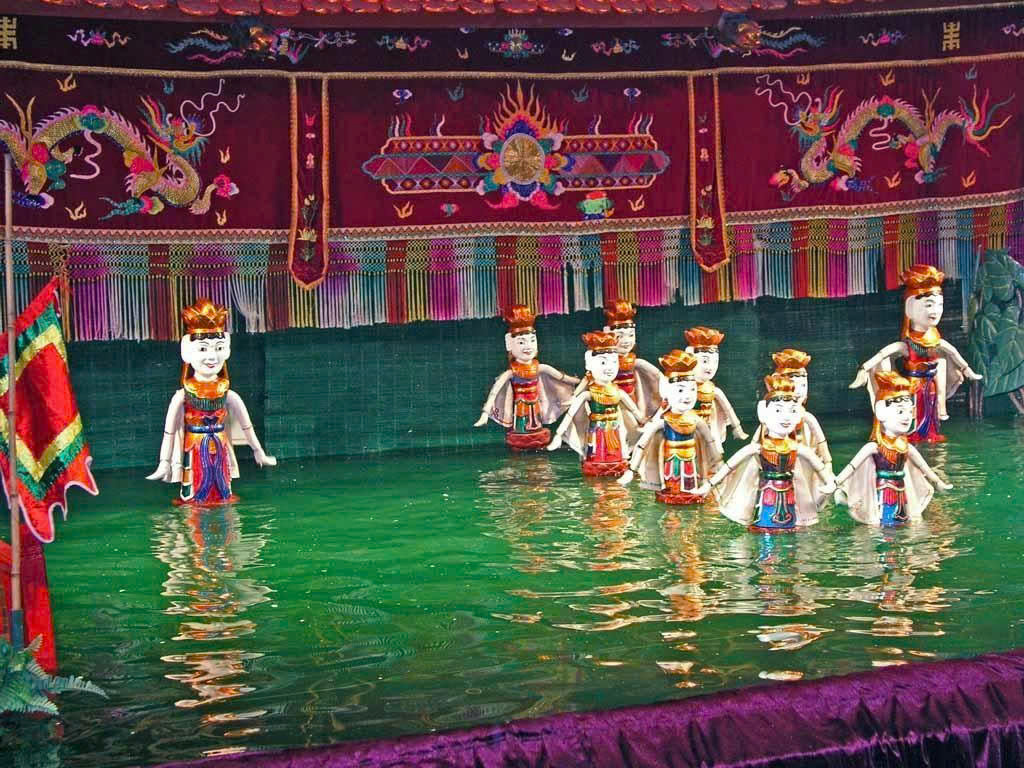
- Visa Requirements: Check Vietnam’s latest visa policies in advance (2025 updates). Many nationalities require a visa, and the rules change frequently. Check for e-Visa options or Visa on Arrival (requires a pre-approval letter).
- Currency: The Vietnamese Dong (VND). As of 2025, the exchange rate is roughly 25,000 VND to 1 USD.
- Tip: Vietnamese currency has many zeros. Learn to quickly recognize the difference between the 20,000 VND and 500,000 VND notes (different colors) to avoid confusion when paying.
- ATMs: Widely available in the city center.
- SIM Card: Easily purchase a local SIM card (Viettel, Mobifone, Vinaphone) at the airport for affordable data and calls. This is essential for using Grab/Be.
- Bargaining: Common in local markets (like Dong Xuan), but not generally expected in modern stores or restaurants. Do so politely and with a smile. Start at 50% of the asking price and settle around 70-80%.
- Tipping: Not mandatory in Vietnam but is always appreciated for excellent service, especially in high-end restaurants, by tour guides, and hotel staff.
RELATED: Best Time to Visit Vietnam: Weather by Month & Tips
Safety and Traffic
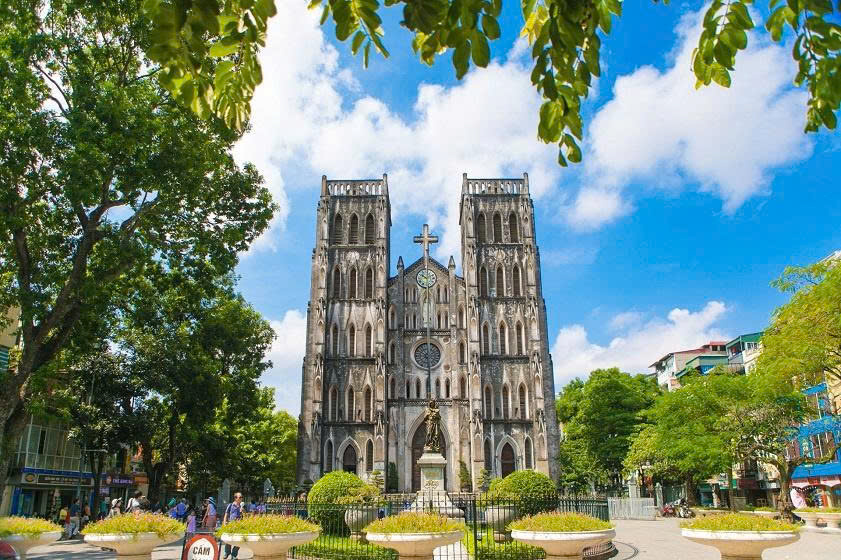
- Traffic: Hanoi’s traffic is chaotic but fascinating. The key to crossing the road? Walk slowly and predictably. Do not stop suddenly. The motorbikes will flow around you. Never run.
- Petty Theft: Keep your bags securely zipped and wear them cross-body, especially in crowded areas or markets, to deter opportunistic thieves.
- Health: Always drink bottled water. Be cautious about ice in drinks, though modern Hanoi restaurants and cafes often use clean, purified ice.
Cultural Etiquette
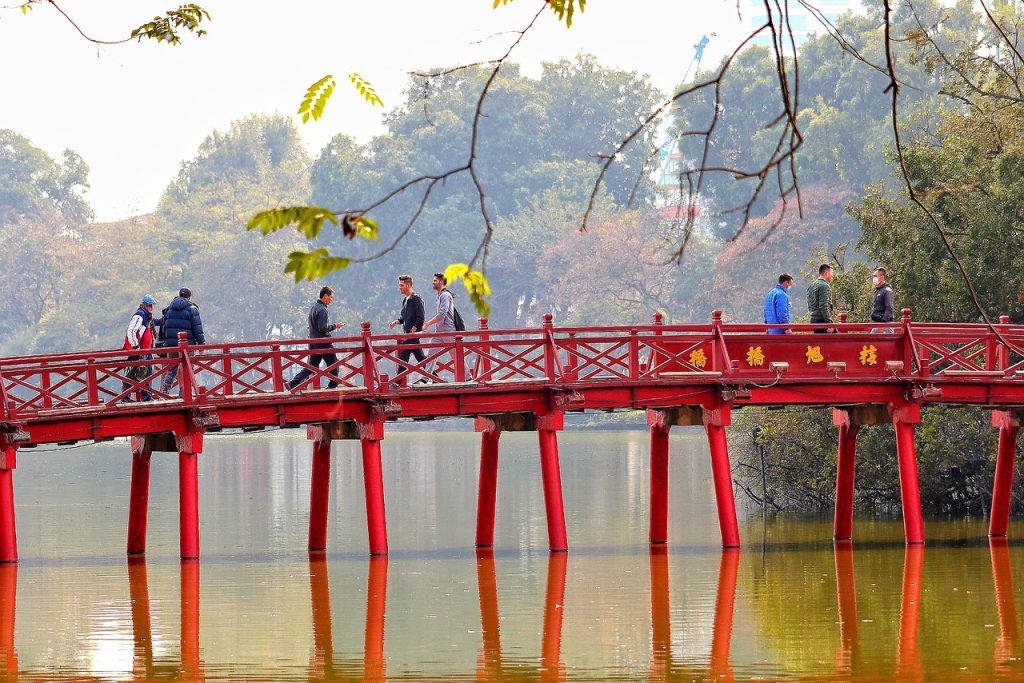
- Temple/Pagoda Visits: Dress modestly when visiting temples and pagodas (shoulders and knees covered). Please take off your footwear prior to entering residences or holy places.
- Public Display of Affection (PDA): Keep it discreet. While modern Hanoi is open, public displays of affection are generally frowned upon.
- Using Both Hands: When giving or receiving an item, especially money or a business card, use both hands as a sign of respect.
- Photography: Always ask for permission before taking close-up photos of local people, especially ethnic minorities or elderly individuals.
RELATED: RELATED: Ho Chi Minh City Guide 2026: Culture, Food & Nightlife
Hanoi is truly the ancient heart of Vietnam, a city where history is lived on every street corner. It’s a city that has withstood centuries of invasions and change, yet maintains a grace and resilience found nowhere else.
We have covered the essentials, from navigating the Old Quarter’s timeless charm to mastering the city’s unique culinary landscape. This detailed Hanoi Travel Guide is your roadmap to a truly immersive Vietnamese experience.
Forget the map for a moment; let the scent of Phở and the buzz of motorbikes guide you. The true magic of Hanoi lies in its moments of unplanned discovery—a hidden café, a smile from a street vendor, the quiet contemplation beside Hoan Kiem Lake.
Book your trip, embrace the culture, and prepare to be moved by the resilience and grace of this captivating capital. Your exploration of Vietnam’s soul starts now. Book tour in Hanoi, check availability and prices here: Klook

